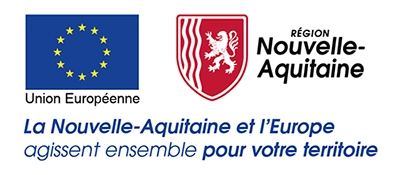This time last year, Glasgow was finalising its preparations to welcome world-leaders and representatives from almost 200 countries to act on climate change and form the Glasgow Climate Pact at COP26.
There was a strong sense of optimism before, during and immediately after the global gathering and a collective desire to accelerate action towards achieving the goals of the Paris Agreement and the UN Framework Convention on Climate Change.
Leaders left Glasgow feeling upbeat with a broad consensus that the objectives of the Summit had been met and that a big step had been taken towards achieving the COP26 goals to:
- Reach carbon neutrality by 2050 and keep global warming below +1.5.
- Adapt to protect communities and natural habitats, particularly those affected by climate change.
- Mobilise climate finance (at least $100 billion per year) to achieve the first two goals.
- Work together to achieve carbon neutrality: the challenges of the climate crisis can only be overcome if everyone plays their part.
Arguably, the 4th goal on the list is the most critical, as without the ability to work together, the other three objectives break down.
Collective action was always going to be key to managing climate change – or any other challenges of such global magnitude.
The months since COP26 have been difficult and undoubtedly impacted on the Summit commitments and the progress made.
The Russian invasion of Ukraine and rapid inflation have led to increases in food prices and global energy costs. Add to this the ongoing tensions between the US and China as well as the continuing COVID 19 pandemic and the situation looks grim.
These are all significant and immediate challenges that World leaders, policy makers and businesses face. A perfect storm that to a large extent has diverted much attention from the COP26 commitments.
Whilst not an exhaustive list, here are some examples of what has (or more poignantly) not happened in the months following the climate conference.
- Only 24 of the 194 countries that attended COP26 have updated their emissions reduction targets.
- The global demand for coal (the largest single source of global carbon emissions) is expected to reach an all-time high this year, despite the commitments made at the Summit.
- Many European countries have re-opened, or extended coal-fired power plants to address the shortfall of Russian gas supply.
- China has approved new coal mines.
In a word – disappointing. But there are some silver linings. Global climate action conferences such as COP26, tend to inspire businesses to enhance their environmental policies and commit to net zero.
It was therefore good to see some new light emerge in the drive to carbon neutrality, such as EasyJet’s recent announcement of new technologies designed to achieve net zero emissions by 2050 in collaboration with industry partners including Airbus and Rolls Royce.
Such partnerships are critical, and the aerospace industry is leading the way in this respect, with the recently announced partnership of Rolls-Royce and the biofuel company Alder Fuels working together on scaling up the production of Sustainable Aviation Fuel (SAF) as another example of how the industry is working in lockstep towards net zero.
IMET Alloys is very proud of its role in helping the aerospace industry build a green, sustainable, and resilient future. The aerospace sector is particularly reliant on the raw materials that are subject to the current geopolitical and geo-economic issues – those same issues that are diverting the attention of leaders and policy makers from the key COP26 objectives.
The commitments of COP26 are of course long-term, and after only 12 months it is too early to determine its success. At the same time, there must be short-term evidence to suggest how seriously we are taking the commitments to something that is so fundamentally important.
At a time when the World is looking for solutions to climate change, we are proud to be part of the solution through the closed loop system IMET provides to its aerospace and hi-tech metal industry partners.
In global terms it may only be a marginal contribution to reducing climate change, but if every business does its bit, then the cumulative effects can be incredible.
Furthermore, businesses can shine a light on Governmental inactivity by holding them to account for not fulfilling their net zero commitments. This may encourage more decisive action from our global leaders.
In the meantime, we now await COP27 in November when we should gain a more thorough picture of where we currently stand on the ultimate journey to net zero.
And perhaps our best hope, is that the initial momentum gained from COP26 is reignited.
Article by Ruaraidh Williamson, CEO IMET Alloys

